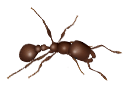Tips for Maintaining a Strong Pest Management Program in Your Food Facility

While September marks National Food Safety Month, food safety should be a priority year-round for the foodservice and food production industries. Pest issues can lead to failed audit scores for third-party audited facilities, or failed health inspections for restaurants. Not only does the sight of pests damage your brand reputation, but pests can also lead to serious health and safety consequences for your customers. Pests can find their way into almost anything, including packaging, shipping and storage containers, or food products themselves. Diligence is the key to success in pest management.
Holder’s is here to offer some tips and tricks to keep you and your staff ready when it comes to pest prevention and sightings.
Pests to Watch For
The range of pests that may enter a food facility is vast, however, there are a few “repeat offenders” that are known to cause headaches. These frequent offenders include flies, cockroaches, rodents, birds and stored product pests. Why are they so interested in food facilities? Because just like us, they need food, shelter and water to survive, and food facilities provide all the above! Food production facilities are also frequently found in remote areas where structural pests live naturally, so it is very easy for them to stumble upon a new food source and take advantage of it.
What to Do When A Pest Is Spotted
Establish a plan of action for when you or another employee spots a live pest or notices any signs of pests such as chewed wires, feces, etc. Make sure the plan of action includes where to document any activity, and what detail to provide including what was seen, where it was seen, when it was seen, and any significant environmental factors present at the time (did you just receive a shipment, did you find a door left open, etc.). If you or an employee can physically see the pest, it would be ideal to capture it or take pictures for documentation purposes. On top of documentation, make sure your employees know what is considered a pest emergency and who to contact if they find one.
Recruit Your Team
Action plans should be relayed to your employees and written down and stored in a common place, like the pest management logbook, so it is easily accessible when needed. It is also highly recommended that you work with your pest management provider to provide your employees with training on pests, signs of pests, and action plans. And this shouldn’t just happen once, it should be scheduled regularly because as your business grows and changes, so will your pest threats. It may also be helpful to ask your pest professional for any checklists or educational materials that may help your team.
Pest management is a key aspect of your food safety plan, and to be successful, it means your team needs to work in conjunction with ours.
Tips for Maintaining a Strong Pest Management Program in Your Food Facility Serving
Houston
Beaumont | Conroe | Spring | Pasadena | The Woodlands | Richmond | Galveston
Baytown | Bryan | Cleveland | College Station | Cypress | Pearland | Sugar Land
Home » Tips for Maintaining a Strong Pest Management Program in Your Food Facility







